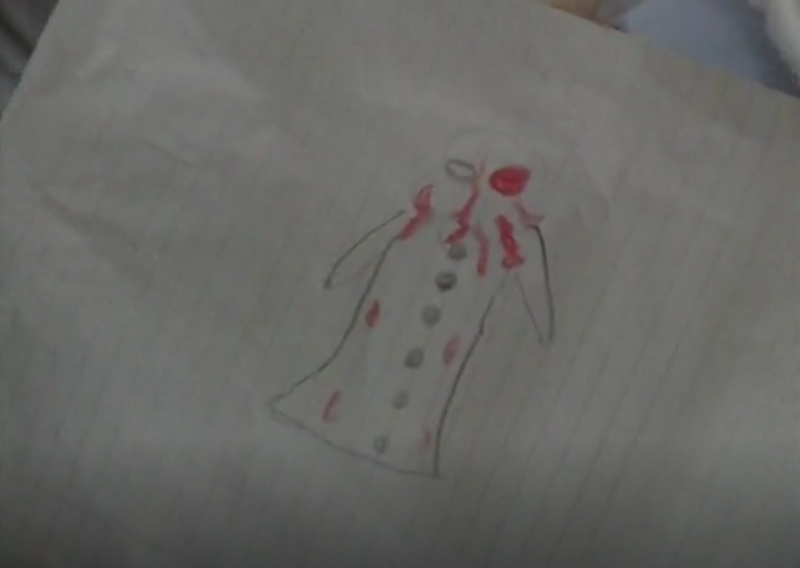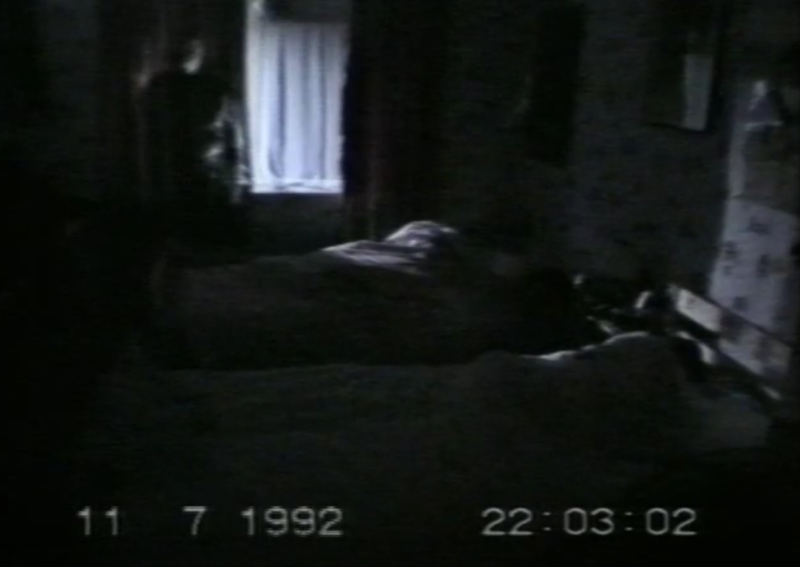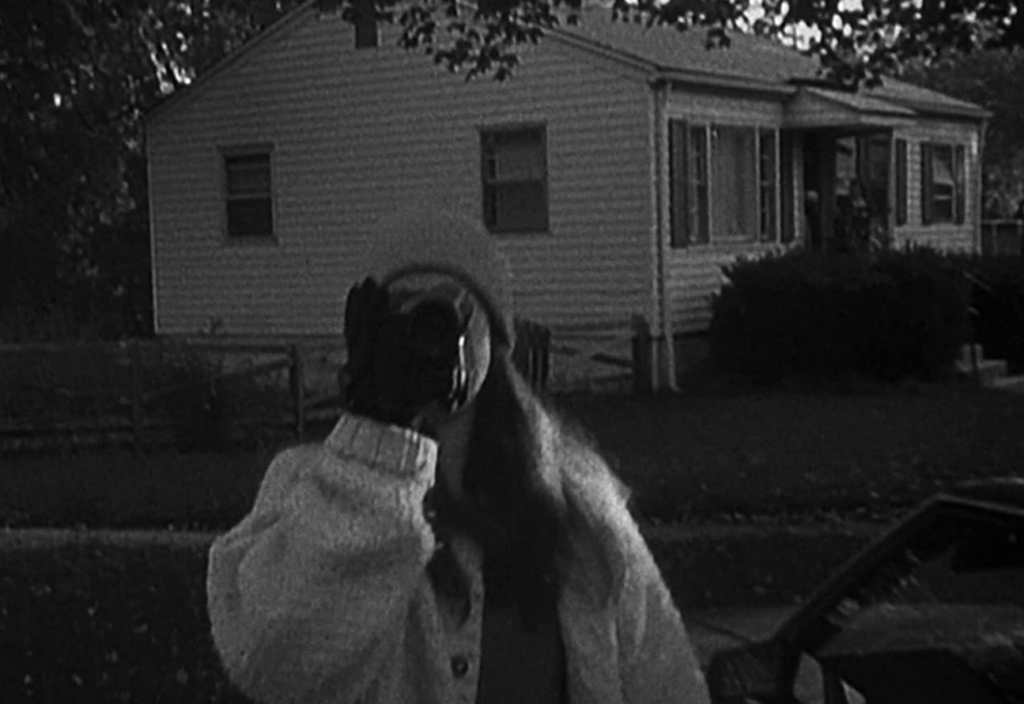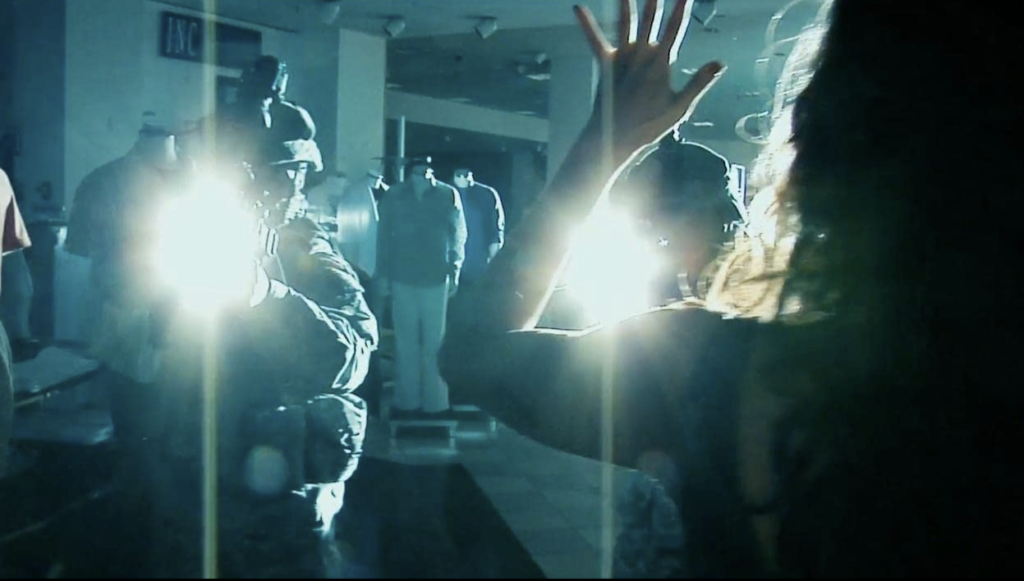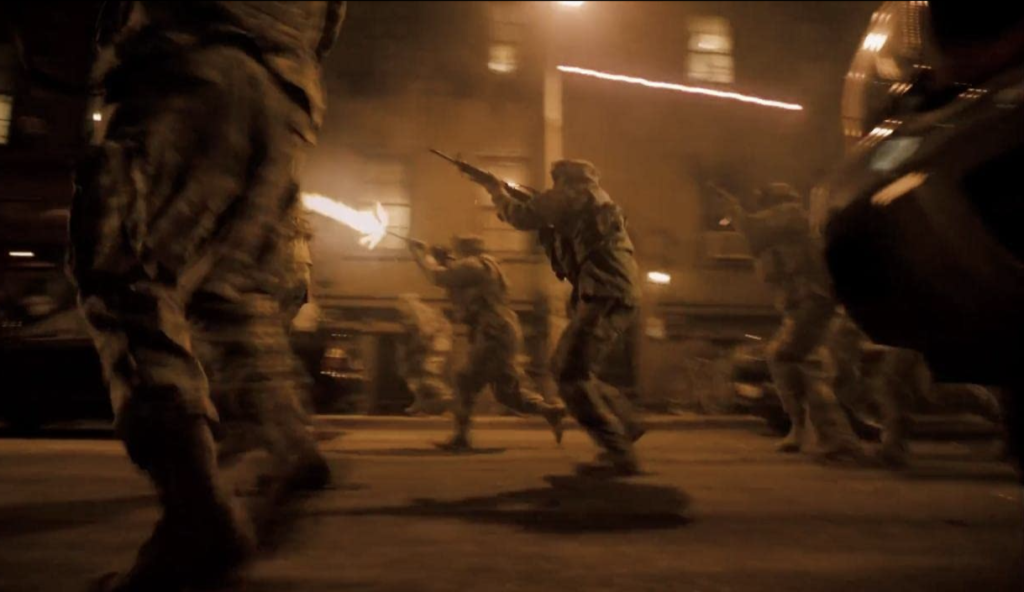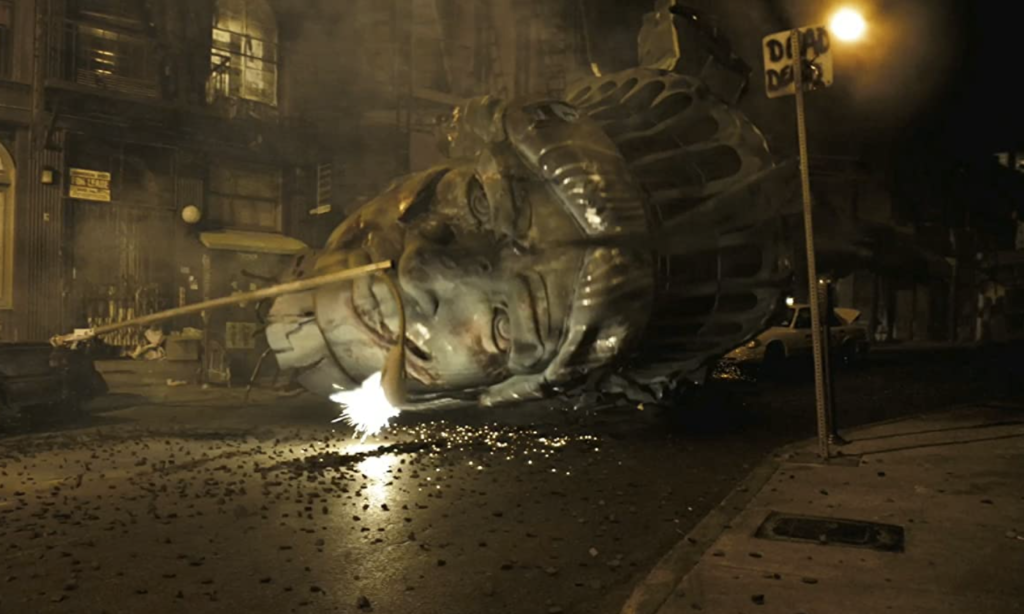‘Ghostwatch’: When the BBC Terrified the Nation with a (Fake) Haunted House Documentary
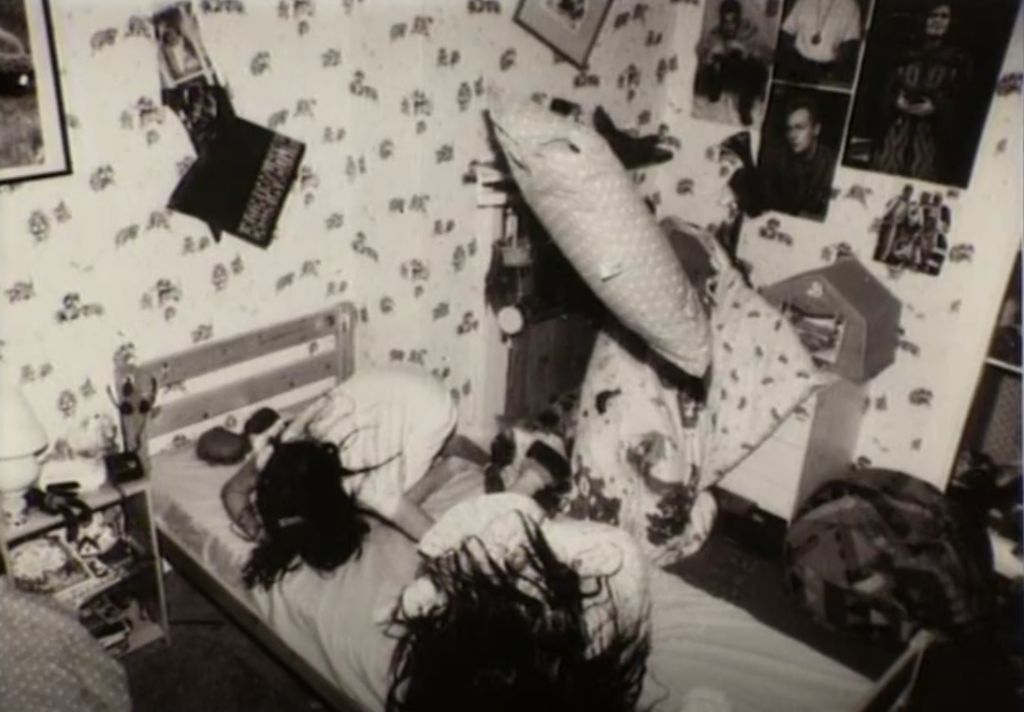
On Halloween night in 1992, the BBC aired what would become one of the most controversial programmes in the broadcaster’s history. Ghostwatch, presented as a live broadcast, followed the Early family and the horrors they experienced living in what was pitched as one of the most haunted houses in the country. And luckily for the BBC an array of paranormal activity was caught on tape, right before their viewer’s eyes, which was an extraordinary historical moment for paranormal investigation. Except it wasn’t, because the entire broadcast was as real as an episode of The Only Way is Essex (i.e. not real at all).
I was enjoying life as a toddler on the opposite side of the planet when Ghostwatch aired, so I didn’t have the pleasure of watching the initial broadcast. But when it recently appeared on my radar (along with the extensive backlash received by the BBC) you better believe I added it to the top of my to-watch list. And my gift to you is a thorough breakdown of what exactly went down during the fateful night that the BBC lost the respect of their viewers, may or may not have influenced a suicide, and caused actual recorded instances of PTSD in children. So if you don’t have a spare hour and a half to watch Ghostwatch then take a deep dive with me, Michael Parkinson, Sarah Greene, the Early family, and their ghostly friend Pipes into the not-so-real story of Britain’s most haunted house.
Ghostwatch: A Play-by-Play of the Controversial Broadcast
The programme you’re about to watch is a unique live investigation of the supernatural. It contains material which, some viewers, may find to be disturbing. No creaking gates, no Gothic towers, no shuttered windows. Yet for the past ten months this house has been the focus of an astonishing barrage of supernatural activity.
– Michael Parkinson, Ghostwatch (1992)
The first minutes of Ghostwatch introduce viewers to the premise of the television special (with an emphasis on the ‘live’ aspect of the show) and that Ghostwatch hopes to once and for all prove the existence of the paranormal. Michael Parkinson presents from the Ghostwatch studio while Sarah Greene and Craig Charles report live from the scene of the Early house, a semi-detached located in Northolt, Greater London. In the studio with Parkinson is parapsychologist Dr Lin Pascoe, who had previously worked with the Early family, and presenter Mike Smith who is charged with managing phone calls from viewers who have experienced instances of paranormal activity. On location with Greene and Charles is a small film and sound crew as well as Alan Demescu, an electronics engineer and member of the Society for Psychical Research. Demescu’s role involves monitoring the cameras placed in the Early home via a van parked out front.
Outside of their home, Craig ‘Known Ghost Hunter’ Charles interviews the Early family about the destruction that the paranormal intruder has caused. Kim, the youngest Early daughter, says her mother Pam originally blamed her for the mess that the ghost was causing before she realised that her daughter wasn’t the culprit. Pam confirms a list of the various damaged personal items including tapes, plates, and mysterious stains appearing on clothes. She appears defeated by the hopelessness of the situation and the damage it’s done to her family’s well being. The Early’s are escorted into their home and Greene tries to lighten the mood by bobbing for apples with Kim and her older sister Suzanne while the broadcast returns to Parkinson and Dr Pascoe in the studio.
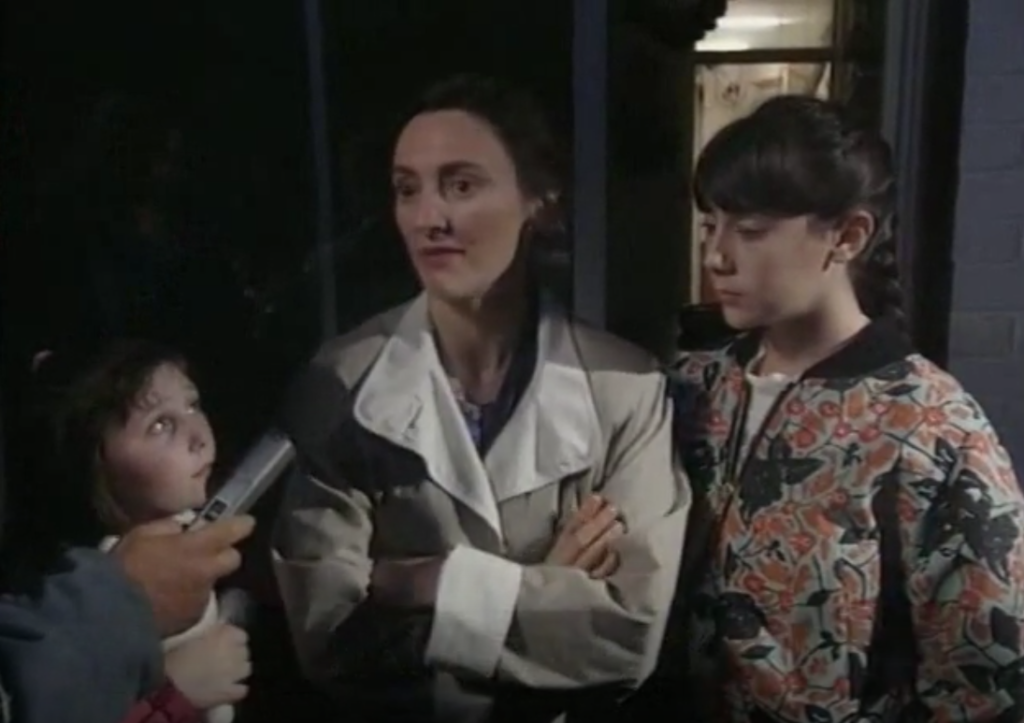
At the beginning of the programme, previously recorded footage of Kim and Suzanne was aired showing the children engaged in a frightening encounter in their shared bedroom with a disembodied entity. When Parkinson and Dr Pascoe take their first audience caller, the caller says that she saw a figure standing in the children’s room during the footage. Dr Pascoe tells the caller that she has reviewed the footage countless times and never saw a figure in their room. Smith asks Greene, who is still bobbing for apples, if she heard what the caller just told them. Greene says she did but hasn’t personally seen anything out of the ordinary. Suddenly everyone in the house hears knocking on the walls, but it’s just a prank being played by Charles who jumps out of a pantry with a monster mask on. This is meant to show us, the viewers, that no one is really taking this seriously (other than Dr Pascoe and the Earlys) and that the BBC isn’t actually expecting to see anything paranormal.
Greene then tours the Early’s home, starting with Kim and Suzanne’s shared bedroom. She explains that the hauntings began in December of the previous year and were first experienced by Suzanne. Suzanne tells the crew that she saw a woman standing beside her bed one night that she believed to be her mother coming to tuck her in. When the figure turned and left without tucking her in, Suzanne knew it wasn’t actually her mother. Pam explains she usually does tuck her daughters in every night, but on that particular night she had fallen asleep in front of the television. She believed Suzanne had just been dreaming until the next night when she heard loud thumping in her own room. Kim says that she heard it as well and was screaming for her mother. Pam told her daughter that the noise was just the pipes, and from then on Kim and her family referred to the ghostly presence as ‘Pipes’.
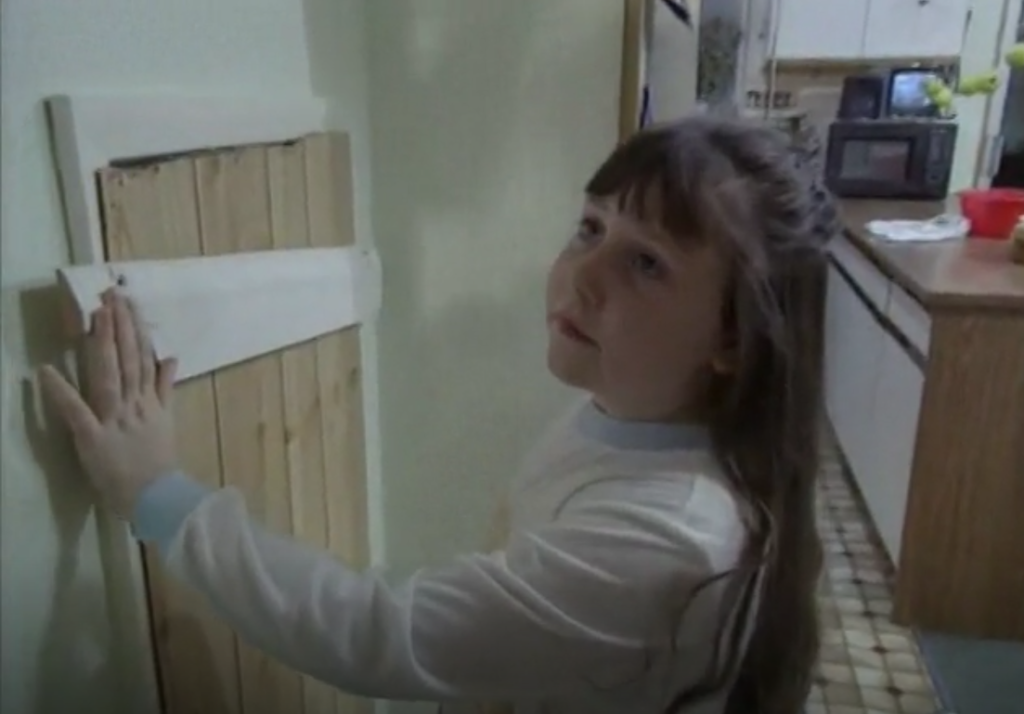
Kim explains that Pipes lives in a closet under the stairs and how she saw him through the crack above the door. Kim shows the crew a picture she drew of Pipes describing him as ‘really disgusting’. Greene decides to hang the drawing of Pipes on the fridge and Kim tells her that Pipes will be happy with that since he likes everything to be freezing cold. Pam then presents Suzanne’s school notebook to Greene which shows that Kim isn’t the only Early daughter creating artwork of Pipes. Unlike Kim’s creepy but tame drawing of the entity, Suzanne’s drawings are sexually explicit and gruesome drawings of a horned figure, along with pages of scribbled words. Pam explains how furious she was with Suzanne when she first found it, but Suzanne pleaded that she wasn’t the one made them. When the camera pans to the contents of the notebook it’s difficult to make out what the writing says other than ‘baby’ and ‘blood’.
Back in the studio, Smith tells Parkinson that the phone operators have received numerous additional calls reporting a figure standing in the children’s room, just as the previous caller had had witnessed. Despite a figure clearly being visible (at least the first time the footage is shown, the second time the figure is no longer there) Parkinson and Dr Pascoe claim they can’t see anything. Dr Pascoe blames the ‘mind playing tricks on us’ and that the figure is actually just a shadow on the curtain. After adding nothing of particular interest to the conversation, they return to Greene at the Early home where the focus shifts to the experience of Pam.
Greene asks Pam what the worst moment of the haunting has been for her so far. Pam explains a particularly harrowing experience that occured in the cupboard under the stairs (that Kim had previously called Pipes’ home). She explains that her ex-husband used to use the cupboard to develop photos. Once he left, it became the place for Pam to keep important documents, including her divorce papers. One night when she went into the cupboard to retrieve them, she felt a force push against the door, trapping her inside. She cried out for her daughters and Kim yelled back that Pipes was the cause. Pam says that while trapped inside the cupboard she felt there was a man with her breathing on her face.
Following the incident, Pam wrote to the council asking to be moved. The council declined. When she spoke to a social worker about the incidents in the home they informed her that her entire family needed to see a psychiatrist. After going to the newspapers for help, Pam and her family were mocked for their claims. As a last attempt for help, Pam went on television to talk about the hauntings. This was when the Early’s case came to the attention of Dr. Pascoe. We then learn that that the BBC special Ghostwatch was being filmed because Dr. Pascoe felt the family would be taken more seriously if the case was documented by the BBC.
Parkinson then introduces Dr Pascoe’s book Angels of the Odd that she wrote during her prior investigation of the Early family case. A tape from Dr Pascoe’s research is played showing the use of the Ganzfeld Technique (sensory deprivation in an attempt at invoking extrasensory perception (ESP)) on Suzanne. She then plays a recording which contains audio of Suzanne screaming as ‘something’ attacks her before her voice morphs into the deep and distorted voice of an angry man. She explains that forensic scientists from Cambridge University concluded the voices on the tape were two different people. When asked to imitate the voice, Suzanne was unable to successfully. Dr Pascoe feels this is proof that the entity was trying to communicate through Suzanne.
Additional contents of her book are discussed such as a photograph she says would have been impossible to fake (seen at the top of this article) and an examination of objects that had been destroyed by the entity at the home. Dr Pascoe says that the army had analysed the objects and said they had been broken from extreme temperature change and not by physical impact.
Parkinson and Dr Pascoe then interview Suzanne from a live feed in the house to ask about lesions that appeared on her face over the past few months. Suzanne says she would feel the cuts across her face while she was waking up and that it felt as though someone was on top of her while it happened. Dr Pascoe tells Parkinson that she once saw the marks appear on Suzanne as it happened. She explains that Suzanne is a classic target for poltergeist activity since she is a young girl, comes from a broken family, is introverted, and doesn’t outwardly express stress and anxiety.
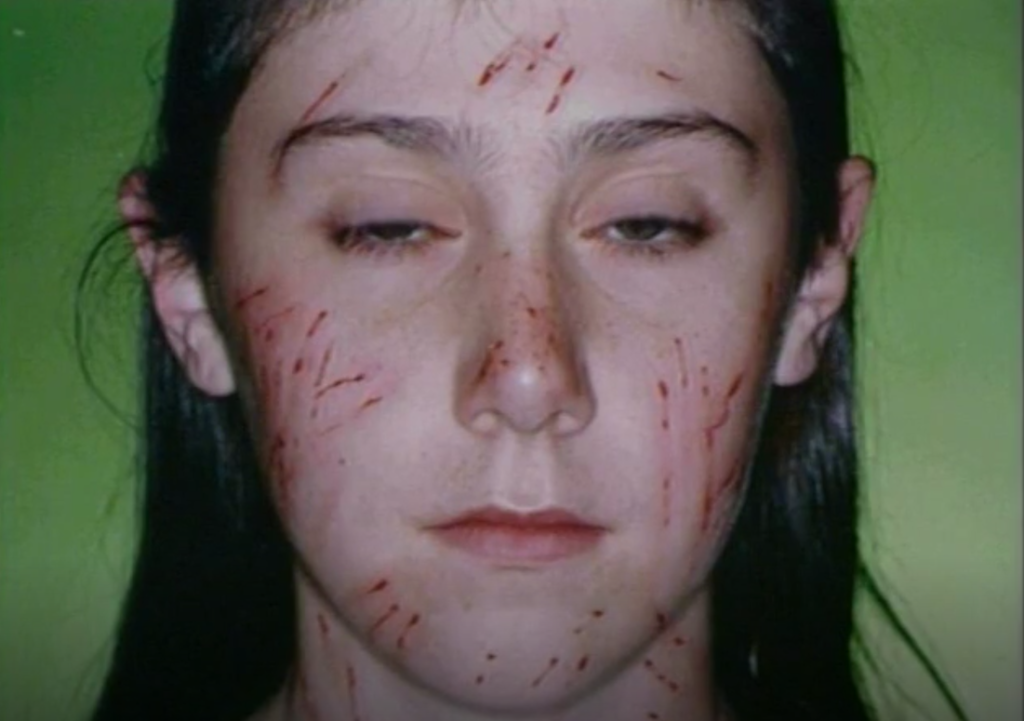
Bringing in a third party, Dr Pascoe and Parkinson interview physicist and former member of the Committee for the Scientific Investigation of Claims of the Paranormal (CSICOP) Dr Emilio Sylvestri who speaks to them live from New York City. Dr Sylvestri, who has been watching Ghostwatch, believes that all the evidence presented is likely fake. Dr Pascoe takes issue with Dr Silvestre’s dismissive attitude and the two bicker back and forth for a few minutes before the programme returns to the Early house.
Kim asks to go to bed and Greene brings her upstairs to tuck her in. When returning downstairs, Greene comments that the house is cold despite all the film crew’s equipment. While the crew is in the kitchen making coffee, the sound technician mentions that he heard animal scratching earlier, but wasn’t able to hear it again when he played the sound back. He also shows that his watch had stopped before they went live (an issue with the house that Dr Pascoe had previously mentioned).
Briefly returning to the studio, Parkinson interviews an anonymous man about his own paranormal experience. While eating dinner the man says he found what looked like saliva on his mackerel and then shortly later found more saliva on his front doorstep. When he lost his temper with the spirit he believed was behind the unhygienic prank, saliva appeared suddenly on his shoes. The man then found excrement smeared on a cupboard door in the bathroom.
After the interview ends, the programme returns to Craig Charles who gives a brief guided tour of the Early’s neighbourhood. He first speaks with Yvonne who lives across the street from the Earlys. She recalls one evening when she heard banging coming from the Early’s home. When she checked outside she saw smashed window and Pam and Kim in the front garden crying. Yvonne says she brought the family into her home and made them a cup of tea. Anytime they needed somewhere to go she would invite them back. But the Early’s house is just one of the numerous places in their neighbourhood that has seen strange activity. She tells Charles that one day her youngest son came home from the neighbourhood playground incredibly upset because he’d found a cut up Labrador dead “like something in a butcher shop”. Yvonne recalls the dog had been pregnant and there were foetuses “scattered all over”. A woman with Yvonne chimes in that there was also a woman from the area that had gone missing and that a five year old child had been stabbed.
Charles then interviews a spiritualist named Arthur who attempted to exorcise the area. He says that he felt an overwhelming sense of evil and was sick for a week afterwards. Arthur believes the entity doesn’t know its dead. He explains to Charles that places inherit traits from their past and that the Early’s home is no different. Charles and Arthur are interrupted by Parkinson who says that they’re switching back to Greene and the Early’s as she has something important to report.
Greene explains that she took Suzanne up to bed and when she came back downstairs there was a strange circle stained onto the lounge carpet. She confirms that no one was downstairs at the time since the crew had come up to Suzanne and Kim’s room with her. They check for stains on the ceiling and for strange smells but nothing else seems out of the ordinary. Dr Pascoe, watching from the studio, says this is very typical of a poltergeist and asks Greene to take a sample to match to the local tap water. When Greene turns the kitchen tap on it takes a few moment for water to flow and when it does the pressure is violent.
Greene and the crew then hear banging coming from upstairs. They head up to investigate and hear scratching coming from inside the walls. Greene follows the sound into Pam’s room and discovers the sound coming from her closet. She begins to remove film equipment to get to the closet but stops when Kim and Suzanne suddenly enter the room crying that there’s someone in the kitchen. Greene escorts them back into their bedroom. Loud banging is heard downstairs that stops once Greene and the crew arrive in the kitchen. On the floor they find scattered children’s drawings that they hadn’t seen before. The banging starts upstairs again, but Parkinson, watching from the studio asks Greene to wait before going upstairs. Dr Pasco explains that Suzanne had left her bedroom but had not appeared in the surveillance footage in the upstairs hallway. She says that this might be a form of misdirection from the poltergeist. But when they go to investigate, they discover that Suzanne is the one making the banging noise from inside the children’s room.
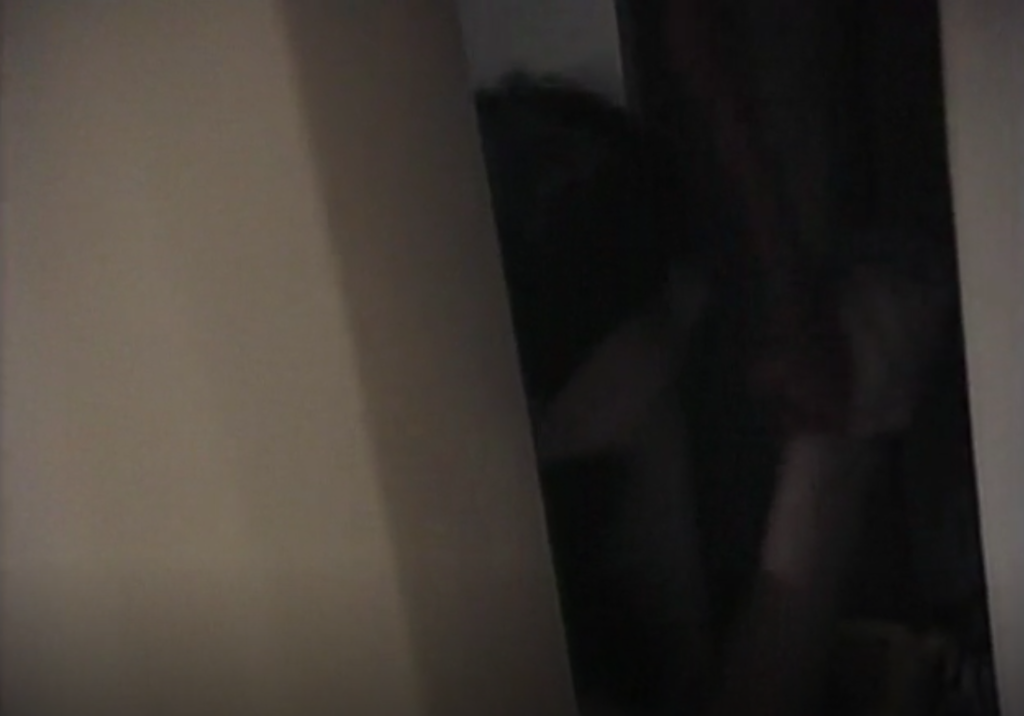
Kim screams from inside the bedroom and Greene and the crew run in to see a distressed Suzanne on her bed crying that it wasn’t her that had been making the sounds. In the studio Parkinson says that the case is closed and that it appears to have all been a hoax, while Dr Pascoe argues that it isn’t a hoax and to continue letting the situation play out. Parkinson asks Suzanne if the writing in the book, the scratches on her face, and the banging on the walls has all been her own doing. Suzanne, while being consoled by her mother, says she was making the noises so that Greene and the crew would stay, but that she hadn’t been responsible for all the banging. Parkinson accuses Suzanne of fakery to her mother who is clearly upset that no one, once again, believes what her family is going through
Parkinson and Dr Pascoe interview sceptic Dr Sylvestri from New York City again who, after watching the broadcast live, says the family are ‘disturbed attention seekers’. Frustrated, Dr Pascoe explains that the entity is playing with everyone in order to make the family appear crazy.
Smith interjects to say they are still receiving calls about the figure seen in the footage of the children’s bedroom from the beginning of the broadcast. He highlights the similarities between all the calls, saying that they all claim to have seen an old man or a woman, bald with a skull-like head, holes for eyes, and clothes buttoned up to the neck. This description seems to trigger Dr Pascoe’s memory of something that occured during her research on the Early’s at the university. She requests the footage be located so it can be shown on the broadcast, which is shown later on.
Parkinson introduces another interviewee who talks about her time living in a haunted house as a child. She recalls shadows that would move at the end of her bed at night which encouraged her to ask her grandmother for a nightlight. The nightlight, however, made the shadows worse. When she begins describing why, the video feed begins to glitch and cuts out. Parkinson laughs it off as ‘maybe being a poltergeist’ and takes another call from a viewer as if nothing had happened.
The next caller, who asks to remain anonymous, says her husband was just taken away in an ambulance after he laid a single finger on a glass table in their home and it shattered, badly cutting his face and hands. The woman is incredibly upset and says that her children are frightened, especially since there is blood all over the walls from their father’s accident. She places blame of the incident on Ghostwatch but Parkinson brushes her comment off and says that her children should be in bed, not watching television so late. The woman stresses that she has tried to get her children to bed but she can’t get them away from the television and Ghostwatch, which they’re watching in a trance. She also mentions that the clock in their home stopped at 9:30PM and hasn’t moved again since. Parkinson dismisses the caller and hangs up, clearly annoyed with what he thinks is another hoax. Dr Pascoe tries to speak to the woman through the television, urging her not to touch anything and to collect evidence. Parkinson interrupts her to inform the viewers that the intention of Ghostwatch isn’t to cause nightmares and that the things they are discussing are rare occurrences and the chances of anything paranormal actually happening to anyone is very slim.
The video footage that Dr Pascoe had previously requested from the university is located and the tape is played in the studio. It shows Dr Pascoe and Kim sitting in a research room at the university. Dr Pascoe asks Kim if she’d ever physically seen Pipes. Kim confirms she has and describes him in exactly the same way as the callers who reported seeing a figure in the children’s room. Dr Pascoe suggests that perhaps it isn’t Suzanne at the centre of the hauntings, but Kim. She doesn’t think this description of Pipes is a coincidence since it’s too specific.
At the Early house, Greene is frantic to get Parkinson’s attention. She then asks everyone to listen closely to what sounds like cats scratching the inside of the walls. Loud meowing can also be heard throughout the house. Kim comes downstairs upset that something is wrong with Suzanne. Pam, Greene, and the crew follow Kim back upstairs to their bedroom and its discovered that Suzanne has fresh scratches all over her face and is in a state of shock. Parkinson once again dismisses it saying that Suzanne could have done it to herself with her own fingernails. Pam frantically grabs Suzanne hands and asks “what fingernails?” while showing the camera that her daughter’s nails are cut back short. Greene is visibly overwhelmed, asking Dr Pascoe and Parkinson what she’s supposed to do. Dr Pascoe asks Greene to feel Suzanne’s temperature, and when she touches her head (she’s very hot despite the room freezing) Suzanne jolts and whispers not to touch her. Pam explains that her daughter is in extreme pain. Greene takes the crew with her into the bathroom to get a wet flannel for Suzanne. While running the flannel under the tap, Greene jumps and says she saw someone standing behind the door, but when she checks there isn’t anyone there.
Parkinson then announces that since the events have been picking up at the Early home that the programme will continue to run as long as required, though he continues to remain sceptical. Dr Pascoe retracts her earlier observation and suggests that Pipes might be targeting both daughters, but admits that she really doesn’t know what’s going on anymore.
Smith interrupts to tell Dr Pascoe and Parkinson that he’s received a very important phone call that they both need to take urgently. The caller, named Mary, says that when she was younger her mother used to say that ‘Mother Seton’ would get them if they didn’t go to sleep/behave and that it used to really scare her and her sibling. She then learned years later that Mother Seton was a real person who was a ‘baby farmer’ and killed babies by drowning them. She lived in a terrace house in Foxhill, which is now Foxhill Drive where the Early’s live. Mary is certain the house that the Early’s live is where the ‘baby farmer’ used to kill children.
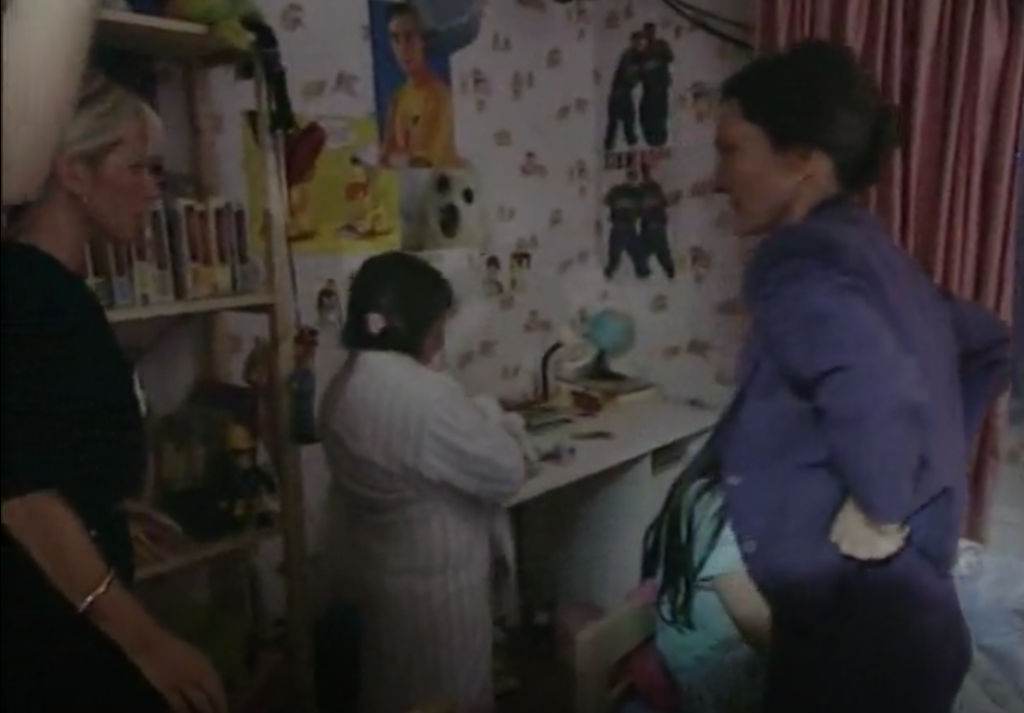
Greene interrupts to say that Suzanne is feeling a bit better and that they’ve decided it’s time to remove the children from the home. Kim throws a fit and insists that before leaving the house she needs to talk to someone. After being prompted numerous times, Kim admits that it’s Pipes she wants to talk to and that he’s in the room with them. Kim stares in a trance-like state at the curtains and Greene asks what Pipes looks like. Kim replies “like somebody’s mum”. Parkinson then insists on getting the children out of the house and Green and Pam grab Kim to try and get her out of the room. Everyone but the cameraman leaves the room and the banging begins once again. The cameraman pans the camera back around the bedroom, quickly passing over what looks like a figure standing in the curtains. When he quickly pans back the figure is gone. Downstairs, Kim cries that they can’t leave the house because “Pipes wants us to stay, Pipes want to see everybody.” Regardless, the children are shown being dressed to exit the home. Despite the very obvious appearance of Pipes in the curtains, Dr Pascoe and Parkinson make no comment about it once they return to the studio.
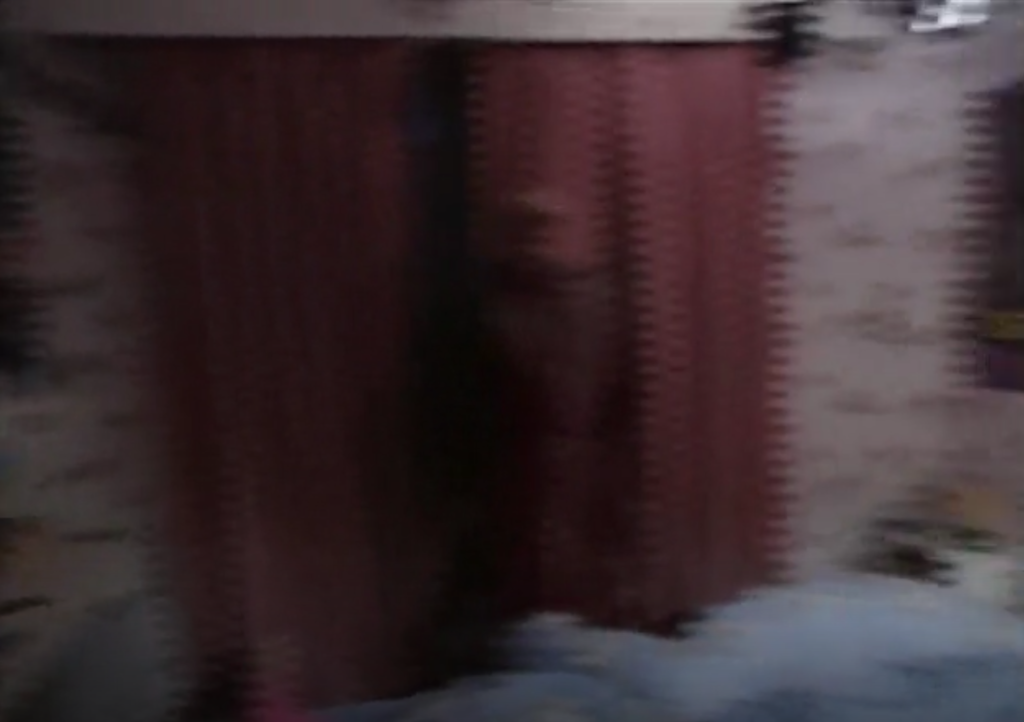
Back at the studio, Smith announces that a high volume of callers are reporting strange things happening in their own homes while watching Ghostwatch. This includes clocks stopping, radios not working, microwaves pinging repetitively, pets acting up, and someone’s son making glasses break. Annoyed, Parkinson brushes the callers off as pranksters and says he’s only interested in what’s happening in the house. He asks if Greene is feeling alright, and when the footage goes back to the house it appears to briefly cut in and out. She says that Suzanne is once again in a state of shock and the camera pans to the corner of the lounge where Suzanne is sitting with her mother kneeling over her.
A loud feedback sound suddenly begins piercing through the speakers and Greene’s earpiece. When she removes the piece from her ear the banging begins again from upstairs. Greene says the noises are coming from the walls and the ceiling and are getting increasingly louder. A picture frame behind her crashes to the floor and the noises instantly cease. Greene realises Kim is missing and goes to find her. The crew stays in the lounge and zoom in on Suzanne who has begun speaking in a deep strained voice, saying things to her mother like “what big eyes you have”. Pam tries to shake her daughter out of the trance and Suzanne (in her normal voice) tells her mother to leave, that she’s just messing everything up and that she hates her. Meanwhile Greene is unable to locate Kim and runs around the house calling her name, checking under beds and in closets. Suzanne is shown on the surveillance camera leaving the lounge but it isn’t clear where she’s gone.
The power begins to flicker and the kitchen tap is turned on full blast and Greene realises someone has put a stuffed toy rabbit in the sink. The lights go out in the kitchen and Greene finds Kim sitting on the floor behind the open fridge door. Kim says “Pipes says he’s been a bad bunny” and shows the eyes from her stuffed rabbit that she’d torn out because “Pipes told [her] to do it”. A suddenly screeching and hissing of a cat is heard coming from somewhere near the kitchen. The sound engineer points his equipment around the area near the cupboard under the stairs. The board that had been nailed to the cupboard door is pulled lose as the cat sounds become angrier and louder. Once opened there’s a brief moment where a figure (Suzanne or Pipes?) is seen inside the closet with a distorted look on its face. The sound engineer is struck by something and falls unconscious on the floor with blood coming from his head. Greene goes to get help but stops when she hears Suzanne screaming from inside the cupboard. Her cries of “he’s hurting me, get off, get away, no go away, mum help me” are heard throughout the home before the connection between the studio and the Early house is cut off entirely.

The feed picks up again outside the house with Craig Charles speaking with Alan Demescu in front of the surveillance van. They comment on how quiet and peaceful everything seems from outside the house. Charles is also unable to contact the studio and has been left in the dark with what’s going on.
Failing to get the connection back, Parkinson and Dr Pascoe settle with watching surveillance footage from a camera in the corner of the Early’s lounge. Everything is oddly peaceful as Greene sits with Suzanne, Kim and the cameraman on the floor around the coffee table. The group appears to be talking as if nothing happened.
While the crew at the studio try and reconnect with Greene, Dr Pascoe and Parkinson take another caller. The caller says that he has information on the history of the house and the Seller family that lived there in the 1960s. He says that the Sellers subletteted a room illegally to their nephew Raymond, which wouldn’t have been documented on any of the house records. The caller says that he had worked as Raymond’s social worker when he was released from a psychiatric hospital. Raymond had been convicted for aggravated abuse and abduction of minors and was a “very disturbed man”. Raymond used to tell his social worker that there was a woman inside of his body taking over his thoughts and actions (perhaps the baby farmer?). He had also begun dressing in ‘woman’s clothing’. Raymond took his own life to escape the delusions by hanging himself in the cupboard under the stairs. He had locked his cats in the cupboard with him (about 12 in total) and since he had killed himself when his aunt and uncle were away, the cats began to eat his face out of desperation before anyone found his body.
Dr Pascoe is upset by the caller and believes what he’s saying in true, but Parkinson sees it as yet another hoax and demands the phone lines be shut down. Dr Pascoe stands up suddenly and walks over to the screens showing the surveillance footage of Greene and the children still sitting in the Early’s lounge. She realises that the stream is no longer live and it’s from a time earlier in the evening. In response to this revelation, the screen suddenly flashes to random spots around the Early house and shows an arm coming out of the cupboard under the stairs. Wind begins to pick up in the studio and Dr Pascoe says that they’ve accidentally caused a séance. Footage is shown live again from outside the Early house with the police and an ambulance parked outside of the home. Everyone is accounted for other than Suzanne and Greene. The screen changes again to an infrared camera showing Greene and the cameraman walking in the dark house looking for Suzanne. Greene finds a flashlight and once she turns it on things begin banging in the house again (as well as back at the studio). They eventually locate Suzanne under the stairs, but the cupboard door is blocked. The door suddenly blasts open and a crying cat can be heard from inside. Greene crawls inside and the door slams behind her. Back at the studio the set begins to collapse as if a storm is passing through. The studio lights turn off leaving everything in silence and darkness. When the lights dimly come back on Parkinson is shown walking around the disserted studio. A cat whine can be heard in the background. Parkinson approaches the camera and begins speaking in a deep strained voice that isn’t his own as the cat screams get louder before the broadcast cuts out.
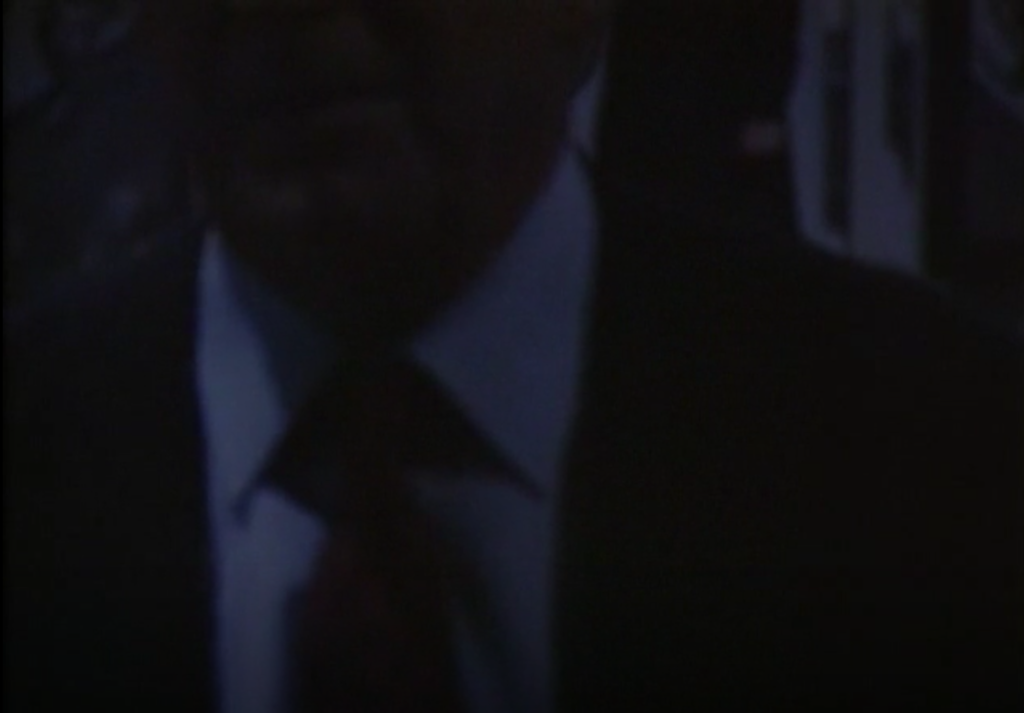
The Aftermath
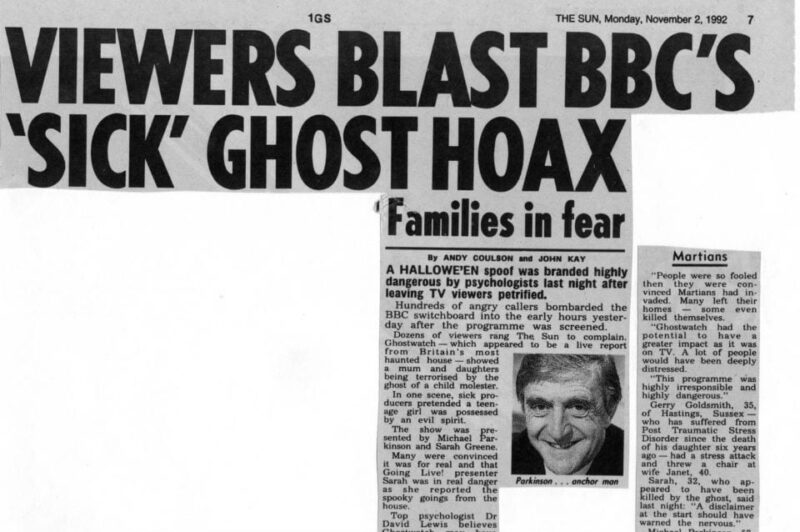
Following the broadcast the BBC received 30,000 complaint calls within a single hour and during the broadcast nearly 20,000 people tried calling in. While many were scared by Ghostwatch, others were furious with the BBC for providing a fabricated story since the broadcaster had a longstanding representation of being a trusted media source.
Besides general outrage, a more tragic event occurred following Ghostwatch. On 5 November 1992, less than a week after Ghostwatch aired, 18 year old Martin Denham was found dead near his home in Nottingham. The cause of death was suicide by hanging. According to Martin’s parents Percy and April, their son’s death was linked directly to the fear and paranoia he felt after watching Ghostwatch. His parents explained that their son became increasingly irritated as the programme aired, and sat curled up into himself throughout the evening. Martin became somewhat obsessed with talk of ghosts and was upset by sounds in his families’ home, specifically the banging of pipes. Martin’s body was found with a suicide note in his left pocket addressed to his mother that read “If there is ghosts I will now be one and I will always be with you as one.” His parents describe his son has happy, with both a girlfriend and a job, despite being a ‘slow learner‘.
Another aftereffect was the alleged diagnosis of numerous children who had watched Ghostwatch with Post Traumatic Stress Disorder (PTSD). Symptoms ranging from sleep disturbances, depression and irritability, panic attacks, and fear of the dark were reported in a handful of children around the age of ten. One boy was reported to go as far as “banging his head to remove thoughts of ghosts” in what two researchers called the first time a television programme caused PTSD (Simons & Silveira, 1993).
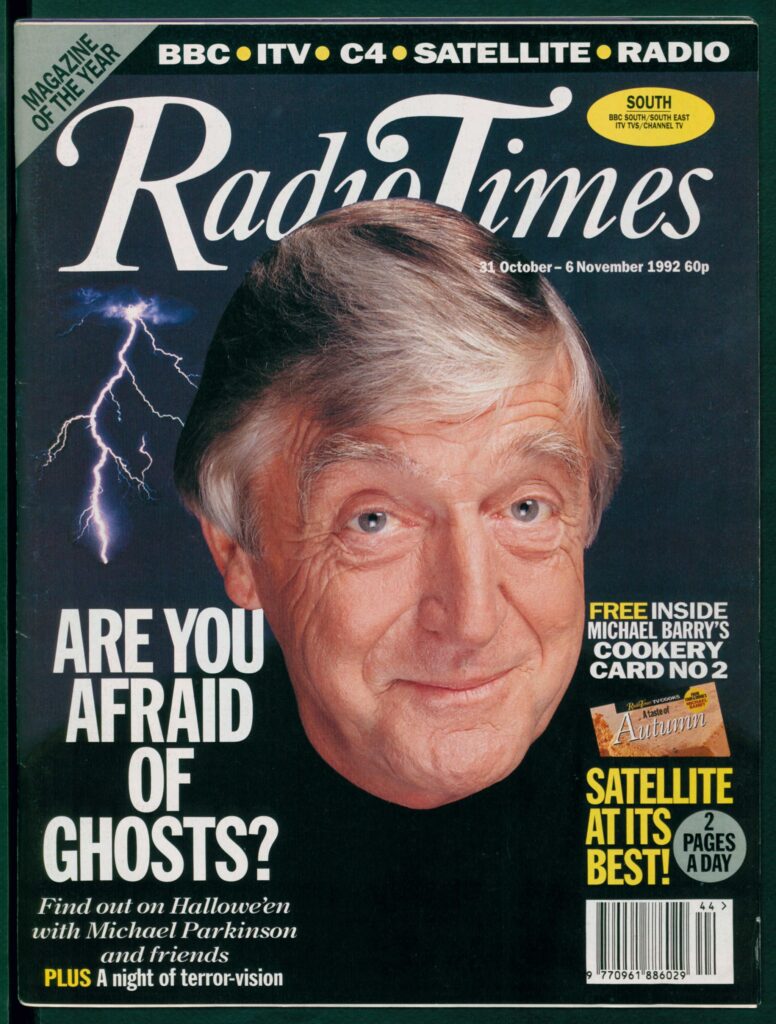
With so many people upset, you’d think the BBC would have made it somewhat clear that the programme was fictional. But in reality, they had done just that. Not long before Ghostwatch aired, an article was released in the magazine Radio Times with a cover photo of Parkinson advertising the Halloween special. For those that read the Radio Times article, they would have known ahead of time that Ghostwatch was in fact entirely fictional. However, as the BBC reflected in their 2017 Ghostwatch article, not everyone reads Radio Times and therefore the majority of viewers went into the programme blind. This isn’t an unreasonable scenario for most television viewers, especially prior to the widespread use of the internet. However, according to Ghostwatch‘s writer Stephen Volk, there was an intent to avoid marketing Ghostwatch as fiction as much as possible arguing “I felt strongly that we were clearly making a piece for people who like that kind of thing, i.e. the spooky ghost story, not those who didn’t. It was never going to delight people who didn’t congenitally like being scared.”
Needless to say, a rebroadcast was out of the question and the BBC made the decision to distance themselves from Ghostwatch. But years later, thanks to the emergence online communication, Ghostwatch saw a wave of attention from viewers who discussed the programme with a sense of nostalgia having viewed it live when they were children or young teens. While Volk was disappointed with the BBCs approach of brushing his programme under the rug following the criticism, he remains proud of Ghostwatch saying, “the best result [was] people coming up and saying ‘I had to sleep with the light on for three weeks but it got me into film-making’ and some have said ‘it got me into horror’.” However, even Volk admits that the horror genre is capable of taking things too far. According to the Broadcasting Standards Commission who reviewed Ghostwatch after receiving complaints from Martin Denham’s family and many others, it was ruled that the BBC did take things to far and had “a duty to do more than simply hint at the deception it was practicing on the audience” and that Ghostwatch was “a deliberate attempt to cultivate a sense of menace.”
What Made Ghostwatch so Real?
Watching Ghostwatch in 2022 is obviously a much different experience than watching it in 1992. However, it’s clear how the programme tricked so many people into believing what they were watching was actually real. The following are a few aspects of Ghostwatch I believe helped give off this illusion:
Recognisable Media Figures: Volk wanted to increase the ‘realness’ of his broadcast by involving recognisable and trusted public figures. Michael Parkinson (broadcaster and journalist), Sarah Greene (children’s television presenter), Mike Smith (television and radio presenter), and Craig Charles (actor from the popular 90s scifi/comedy programme Red Dwarf), made the broadcast feel more legitimate, especially since their real names and personalities were used.
Nondescript House and Family: The location of the house in Northolt, Greater London, the Early family themselves, and even the interior of the house is all very normal, almost boring. The house looks like a home everyone in England has visited at least once, or perhaps even live in themselves, and the family looks like they could be your next-door neighbours. There is absolutely nothing remarkable about them or their lives, which makes the feeling of ‘this could happen to me’ an upsetting reality. As Michael Parkinson says at the beginning of the broadcast, there are “no creaking gates, no Gothic towers, no shuttered windows” in the story of the Early family’s poltergeist. If the broadcast had been set in a multi-million pound historic estate in the English southwest it’s very likely Ghostwatch would not have had the same affect on viewers. Viewers watching the Early family and possibly seeing their own family and home reflected back at them was certainly a contributing factor of the Ghostwatch immersion.
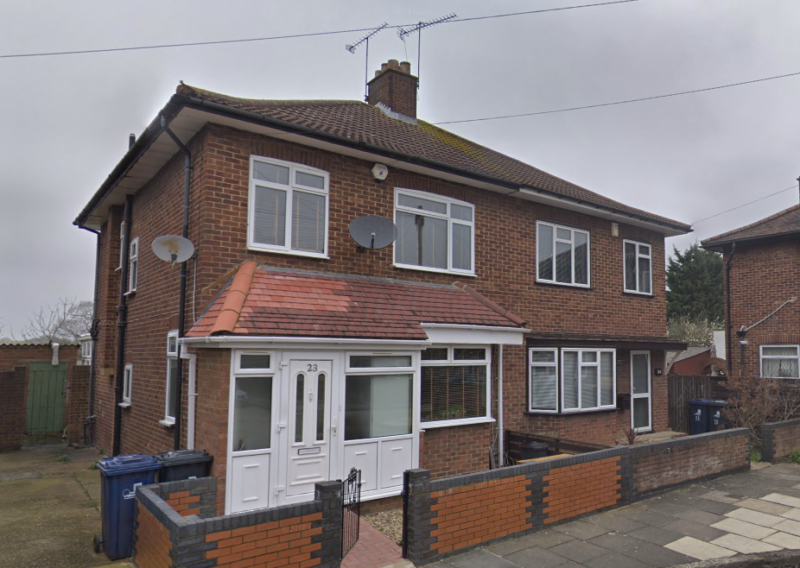
Real Paranormal Organisations: A small detail that could have added legitimacy to the broadcast for a select number of viewers (particularly those with a prior interest in paranormal) was the mention of real-world paranormal organisations. Near the beginning of the broadcast, Sarah Greene introduces Alan Demescu, an electrical engineer responsible for monitoring electronic equipment from a van outside of the home. Greene mentions that Demescu is a member of the Society for Psychical Research (SPR), which is a real London based paranormal research organisation that has been active since 1882. Another referenced real-world organisation comes up during the tense interview with Dr Pascoe and Dr Emilio Sylvestri who is said to be a member of the Committee for the Scientific Investigation of Claims of the Paranormal (CSICOP). Now known as more simply the Committee for Skeptical Inquiry (CSI), the non-profit organisation was formed in 1976 to promote more critical and scientific investigations into paranormal claims, or ‘scientific scepticism’. The incorporations of these organisations into the script, however brief, shows the level of realism that Volk strived to achieve with Ghostwatch.
‘Live’ on the BBC: As I’ll discuss below, Ghostwatch wasn’t the first piece of media to receive backlash for blurring the line between fiction and reality. But the combination of presenting Ghostwatch as a ‘real’ haunting shown ‘live’ on the trusted BBC must have made even the most sceptical viewers stop and wonder if what they were witnessing was actually happening. While today the average viewer wouldn’t think twice before declaring something like Ghostwatch fiction, this type of programme simply wasn’t the norm in 1992. Especially before the internet allowed real-time discussion and easy access to information. If the BBC tried to pull something like this off in a world where found-footage films have become a slightly overdone horror trope it simply would not have the same affect.
Audience Participation: The addition of Mike Smith and his small army of phone operators also contributed to the feeling of a real live broadcast. This type of broadcast format, where the audience could call in, wouldn’t have been abnormal at the time. And since the callers were presented as real people (despite being actors), their personal haunting experiences and the paranormal occurrences that happened while they were watching Ghostwatch, could have influenced viewers to look over their shoulder and wonder if something was about to happen to them. Ghostwatch wasn’t just happening on the television, it was happening all over the country.
If viewers made it to the end of the broadcast they were met with rolling credits, the most obvious sign that everything shown on Ghostwatch was fiction. This could have influenced the 20,000 angry callers questioning the BBC’s credibility when the broadcast ended.
The Popularity of Found Footage and Mocumentary Horror
While causing some panic in the United Kingdom, Ghostwatch was not the first or last piece of media to scare viewers by blurring the line between fact and fiction.
At 8:00PM on Halloween night in 1938, fifty-four years before Ghostwatch aired on the BBC, Orson Welles was at the centre of one of the most infamous cases of unintentional media influenced mass panic. On the New York City radio show The Mercury Theatre on the Air, Welles directed and narrated an adaptation of The War of the Worlds (1898) by H.G. Wells. Since a portion of the story was told through breaking news styled segments broken up by musical interludes, the broadcast would have sounded realistic to listeners that missed the programme’s introduction. Allegedly, viewers that tuned into The Mercury Theatre on the Air after another radio show called Chase and Sanborn would have done so during one of these musical breaks. This meant the first thing they’d hear from the show was an alien invasion that was currently happening in New York City. While the scale of panic was likely exaggerated by the media, it’s an interesting precursor to mocumentary styled fiction that would eventually become a mainstay in the horror genre. (The entire War of the Worlds broadcast is available for free on Wikipedia, it’s a fascinating listen!)
In 1980 Italian director Ruggero Deodato released his controversial film Cannibal Holocaust. The film featured recovered footage from a group of fictional documentary filmmakers that went missing in the Amazon while investigating native cannibal tribes. The film was marketed as being real found footage and the actors who died on screen signed contracts not to appear in public for a year following the release of the film in order to keep up the illusion. This backfired when Deodato was taken to Italian court for accusations of creating a snuff film, implying the horrendously graphic murders that occured on screen were real. Even when Deodato was found not guilty of murder, he was still under fire for the killing of real animals shown in the film. This included a coati, a turtle, a tarantula, a boa constrictor, a squirrel monkey, and a pig. Deodato has since gone on the record to say the animal slaughter was the only thing about the film that he regretted.
Seven years after Ghostwatch aired, the low-budget Blair Witch Project exploded onto the horror scene. At the beginning of the film the screen reads “In October of 1994, three student filmmakers disappeared in the woods near Burkittsville, Maryland while shooting a documentary. A year later their footage was found.” This statement went hand-in-hand with the revolutionary viral marketing that encouraged viewers to research the (fictional) story of the Blair Witch and the missing students online prior to the film’s release. This involved the distribution of leaflets and a short trailer directing people to a website (the original site no longer exists, but it’s still partially available on the Internet Archive). The website included a timeline of the history of the Blair Witch, photographs, police ‘evidence’ such as the documentary tapes, the Hi-8 video camera, a backpack, and news sources that covered the missing students. It was difficult to keep up the pretence of a ‘true story’ once the film was released, but some viewers faced real-world consequences as the film was said to cause motion-sickness and vomiting in theatres.
The world of found footage horror films and mocumentaries changed dramatically after The Blair Witch Project. Countless filmmakers saw the audience enthusiasm for horror films that blurred the lines between reality and fiction and began their own faux-documentary exploits. Popular examples from the genre include the monster film Cloverfield (2008) which was marketed heavily through an extensive ARG (augmented reality game), the Paranormal Activity series (2007-2021) that utilised in-home surveillance footage to deliver what would have previously been ‘off camera’ scares, Apollo 18 (2011) which took found footage horrors to the moon, and As Above, So Below (2014) which took a creepy real world location (the Paris Catacombs) and created a claustrophobic mocumentary nightmare. While people either love or hate found footage and mocumentary films (I personally love them), their popularity in the horror film industry has yet to wane, especially since they’re so cheap to produce.
Ghostwatch, while relatively unknown outside of the United Kingdom, stands alone in the mocumentary/found footage scene by involving real public media figures and a trusted broadcaster that inspired full immersion into the ‘live’ broadcast. Would Ghostwatch receive the same reaction if it was aired for the first time today? Probably not. We are more sceptical of what we see on television and more aware of tricks that can be played through CGI and photo editing software. And we’re no longer isolated in our homes while watching TV; we can chat instantly with other viewers from all over the world. We know how the found footage/mocumentary game works now and these films simply do not deliver the same realistic scares they did before The Blair Witch Project.
So when you watch Ghostwatch, which you absolutely should, imagine its 1992, you’re 12 years old, you don’t have the internet, you didn’t read the Radio Times article, and your parents are letting you stay up late to watch a documentary about a haunted house on the BBC. Are you sleeping with the lights on that night?
Sources and Additional Reading
BBC News – Ghostwatch: The BBC Spoof that Duped a Nation
Bloody Disgusting – ‘Ghostwatch’: The Scariest Hoax in Television History
History – How ‘The War of the Worlds’ Radio Broadcast Created a National Panic
NME – Cult TV classic ‘Ghostwatch’ at 25: ‘our show made a man shit his pants’
Screen Rant – How the Blair Witch Project Changed Movie Marketing
StephenVolk.net (Ghostwatch writer’s website)
The British Psychological Society – Looking Back: The ghost in the living room
The Guardian – Cannibal Holocaust: ‘Keep filming! Kill more people!’
Yahoo! Movies – ‘Ghostwatch’: Looking back on the BBC drama that ‘traumatised’ the nation
Wikipedia – The War of the Worlds (1938 radio drama)

